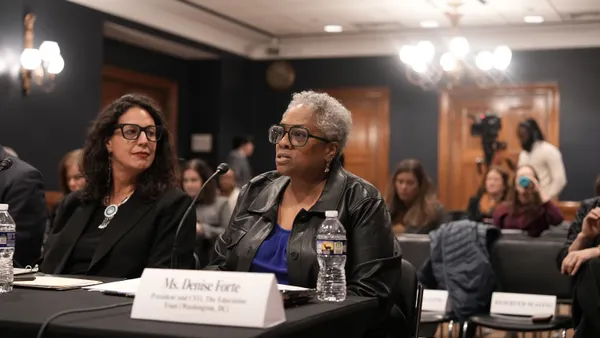Dive Brief:
-
The pandemic increased screen time significantly for families in particular, according to a new report from Qustodio, which runs an online filtering tool geared towards families. And while usage isn’t returning to pre-pandemic levels, attitudes around the use of technology have, according to Qustodio CEO and co-founder Eduardo Cruz.
-
Qustodio surveyed 400,000 families with children between the ages of 4 and 18 worldwide in 2021, in addition to interviewing 1,200 parents in the U.S., U.K. and Spain on online video, social media, gaming, education and communication tech usage. While students in the U.S. and U.K. increased their time on educational apps by 14% in 2021, they also increased the time spent on entertainment and gaming apps like Roblox and TikTok.
-
Both parents and children are now looking to regain balance over time spent on devices and with technology. While 79% of parents said technology helped their children with learning, 23% of children said they felt they spent too much time on technology.
Dive Insight:
“Of course, parents and educators are naturally concerned about the increasing levels of screen time they’re observing, but what’s now becoming apparent is that children are becoming more aware of their actions,” said Cruz.
Children’s digital habits and parents’ concerns about them may help schools make more informed choices on how to implement digital tools and resources in curricula — as long as they’re asking the right questions, said Scott McLeod, professor of educational leadership at the University of Colorado, Denver.
McLeod said curbing technology isn’t the right way to approach its use in schools. Instead, he suggests educators and stakeholders think of how they’re using and weaving these tools into classrooms in the first place.
“The adjustment is not ‘screens versus not screens,’” he said. “We have powerful tools. What are we doing with them?”
Indeed, Qustodio found parents in Spain and the U.K. were “overwhelmingly positive” about how digital tools were woven into their children’s education. Of parents interviewed, 75% in Spain and 82% in the U.K. said that “technology helps their child learn better,” according to the report.
To McLeod, problems using technology in schools arise when these resources become the focus rather than the tool. For example, students may resist a middle school social science assignment to build a PowerPoint presentation on China without meaning behind the task. Instead, he sees a better approach as one that creates a reason for using technology — not something that feels prescribed or artificial.
In the business world, for example, people use technology to get their work done — it’s in the background and not the goal of the task itself, McLeod said. Likewise, his son uses Minecraft and has his own servers so he and his friends can build together in a virtual space. The technology itself is not the goal there, but rather the avenue to share, create and connect.
That is what McLeod advises schools should consider as they adjust curricula with technology in mind.
“I think the key as we think about technology and around kids is not to use technology in an artificial way, but can we give them meaningful things to work on together,” he said. “We’re trying to foster positive interdependence.”






 Dive Awards
Dive Awards



